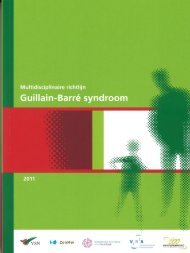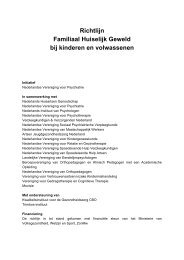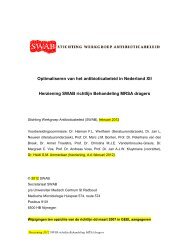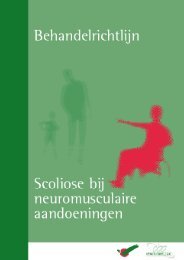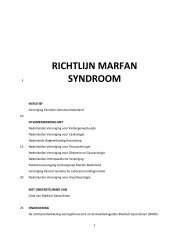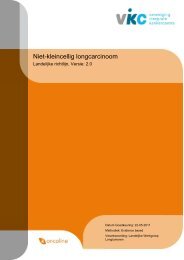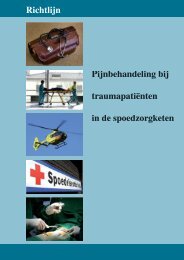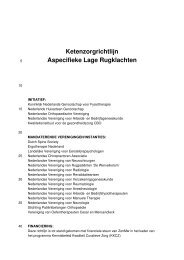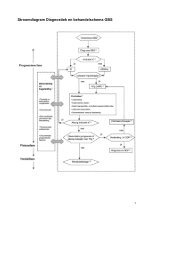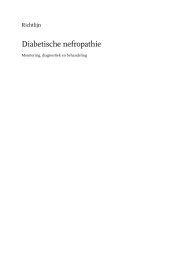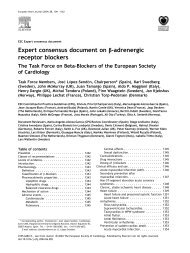Richtlijn: Otitis Externa - Kwaliteitskoepel
Richtlijn: Otitis Externa - Kwaliteitskoepel
Richtlijn: Otitis Externa - Kwaliteitskoepel
Create successful ePaper yourself
Turn your PDF publications into a flip-book with our unique Google optimized e-Paper software.
external auditory canal. Consultation of a dermatologist can be helpful; the treatment of<br />
dermatologic disorders is not discussed in this guideline. The ear canal and tympanic membrane<br />
should be reexamined to detect cholesteatoma of the external ear canal or middle ear or chronic<br />
suppurative otitis media. Also, malignant otitis externa (necrotizing) or carcinoma of the external<br />
auditory canal should be excluded, especially if granulation tissue is present (Lucente 1995, Marzo<br />
2003). If any response to extensive therapies fail (pathologic) automutilation should be considered.<br />
Below, a table is presented giving an overview of factors discussed in question 1a, 1b and 7. The<br />
flowchart on page 37 (in Dutch) describes the steps to follow when a patient presents with persistent<br />
otitis externa.<br />
Table 2. Reconsideration OE diagnosis and treatment<br />
Differential Diagnosis Modifying factors Misdiagnosis<br />
Acute <strong>Otitis</strong> Media<br />
Contact dermatitis<br />
Dermatose<br />
Furunculosis<br />
Viral infections<br />
History of radiotherapy<br />
Immunocompromised state<br />
Open middle ear cavity and the<br />
presence of tympanostomy tubes<br />
Dermatologic disorders that involve<br />
the external auditory canal<br />
- seborrheic dermatitis<br />
- psoriasis<br />
- dermatomycosis<br />
- acne<br />
- folliculitis<br />
Cholesteatoma of the external ear<br />
canal or middle ear; chronic<br />
suppurative otitis media.<br />
Malignant/necrotizing otitis externa<br />
Carcinoma of the external auditory<br />
canal<br />
Automutilation<br />
Microbiologic factors:<br />
Fungi may be present as a copathogen in some patients with AOE, and cause persistent infection<br />
from overgrowth in the ear canal if the flora is altered after topical antibacterial therapy (Dibb 1991).<br />
A culture of the ear canal can identify fungi, resistant bacteria, or unusual causes of infection that<br />
require targeted topical or systemic therapy.<br />
Persistent otitis externa<br />
The literature provides us with three guidelines concerning this topic (Rosenfeld, Kaushik, NHG). The<br />
period of time after which AOE is called persistent differs.<br />
34 <strong>Richtlijn</strong> <strong>Otitis</strong> <strong>Externa</strong> 2010<br />
Nederlandse Vereniging voor Keel-Neus-Oorheelkunde en Heelkunde van het Hoofd-Halsgebied




